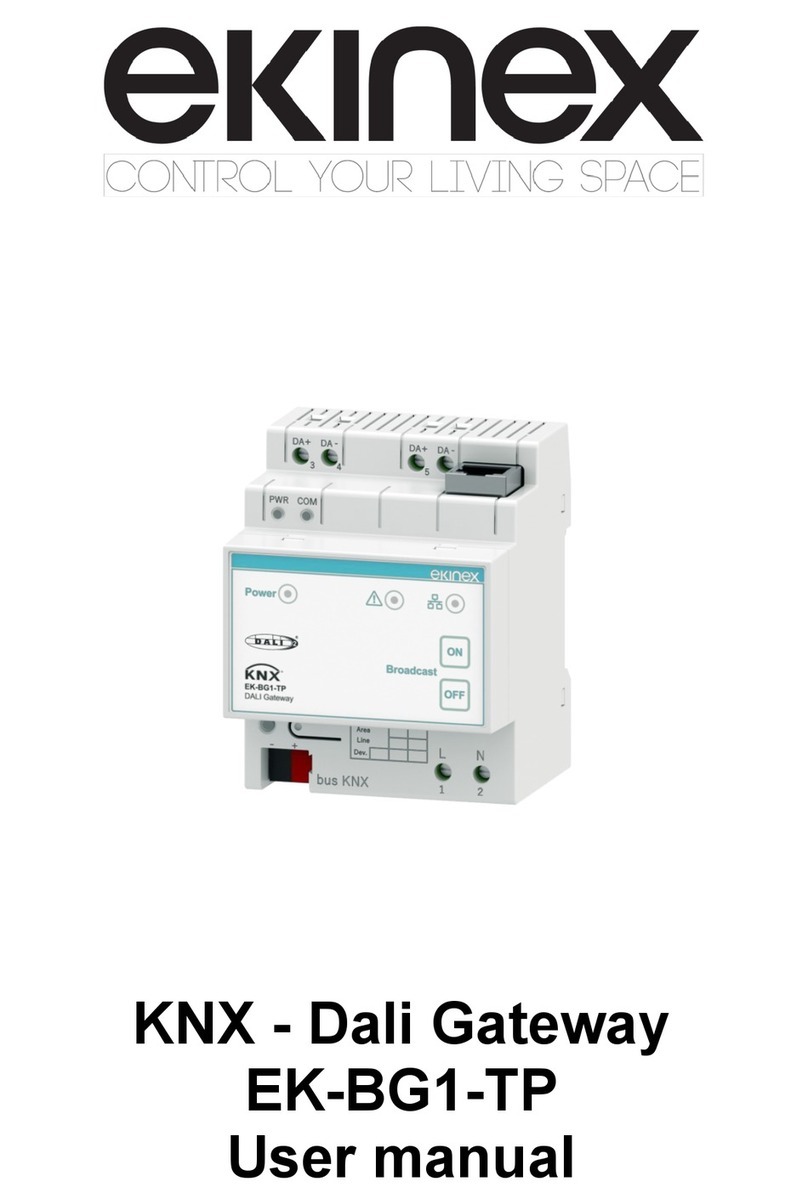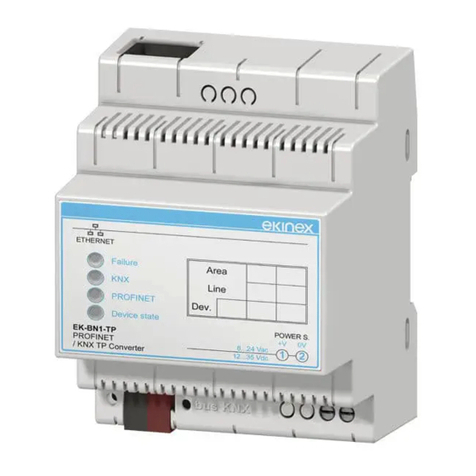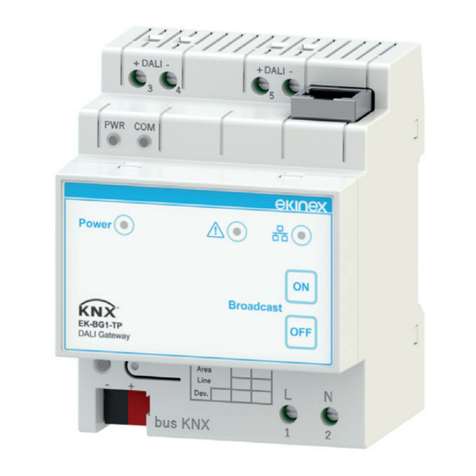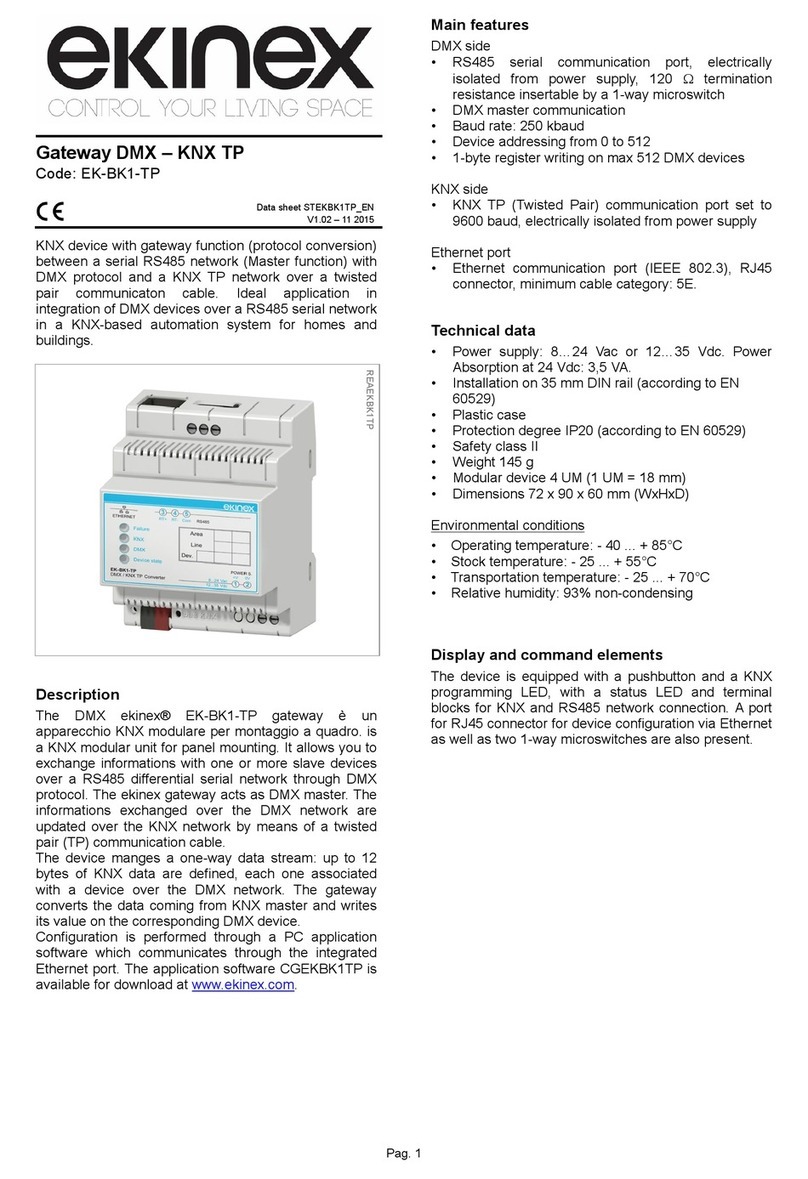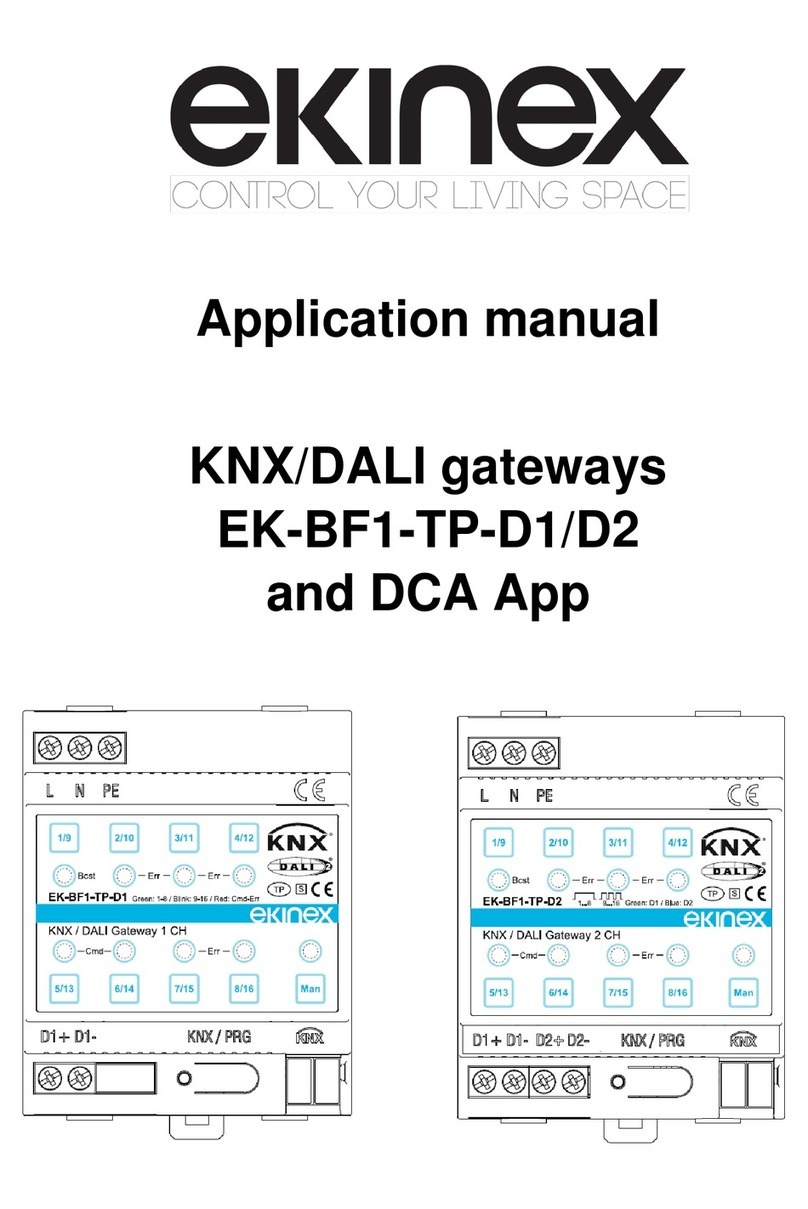
Pag. 1
Gateway Modbus master RTU RS485 –
KNX TP
Code: EK-BH1-TP-485
Data sheet STEKBH1TP485_EN
V1.3 – 01 2019
KNX device with gateway function (protocol conversion)
between a serial RS485 Modbus RTU network (Master
function) and a KNX TP network over a twisted pair
communicaton cable. Ideal application in integration of
Modbus devices over a RS485 serial network in a KNX-
based automation system for homes and buildings.
Description
The Modbus master RTU RS485 ekinex® EK-BH1-TP-
485 gateway is a KNX modular unit for panel mounting.
It allows you to exchange informations with one or more
slave devices over a RS485 differential serial network
through Modbus RTU (Remote Terminal Unit) protocol.
The ekinex gateway acts as Modbus Master. The
informations exchanged over the Modbus network are
updated over the KNX network by means of a twisted
pair (TP) communication cable.
The device manages a two-way data stream: the
Modbus registers can be cyclically read and their value
sent as a communication object over the KNX TP
network through a multicast communication to
configured group addresses. The data update over the
KNX network can be done cyclically and/or on event of
change of the data acquired by the Modbus network.
Likewise, the ekinex gateway can make requests to
cyclically readings KNX communication objects or
acquire their values during data exchange over the bus.
Cyclically or on event of change of the communication
objects, data are written on the Modbus registers of one
or more configured devices.
The ekinex gateway supports the entire Modbus RTU
master protocol with the possibility of reading and writing
single and multiple 1-bit registers (Coil and Status) as
well as 16-bit registers (Holding and Input). It is also
possible to read and write multiple registers containing
32-bit floating point values (IEEE 754 format).
As for KNX communication, 1-bit, 1-byte, 2-byte and 4-
byte communication objects can be acquired: internal
conversion functions allow you to convert the
informations from and to 16-bit floating point values (DPT
9.xxx) starting from integer Modbus registers.
Configuration is performed through a PC application
software which communicates through the integrated
Ethernet port. The application software
CGEKBH1TP485 is available for download at
www.ekinex.com.
Main features
Modbus side
•RS485 serial communication port, electrically
isolated from power supply, 120 termination
resistance insertable by a 1-way microswitch
•Modbus master RTU (Remote Terminal Unit)
communication
•Selectable baud rate from 1200 to 115200 baud
•Device addressing from 0 to 250
•Coil, Input, Holding Register e Input Register data
exchange
•Single and multiple register reading/writing
•1440-byte volatile support “Modbus image” memory
buffer
KNX side
•KNX TP (Twisted Pair) communication port set to
9600 baud, electrically isolated from power supply
•1440-byte volatile support “KNX image” memory
buffer
Ethernet port
•Ethernet communication port (IEEE 802.3), RJ45
connector, minimum cable category: 5E.
Technical data
•Power supply: 8…24 Vac or 12…35 Vdc. Power
Absorption at 24 Vdc: 3,5 VA.
•Installation on 35 mm DIN rail (according to EN
60529)
•Plastic case
•Protection degree IP20 (according to EN 60529)
•Safety class II
•Weight 145 g
•Modular device 4 UM (1 UM = 18 mm)
•Dimensions 72 x 90 x 60 mm (WxHxD)
Environmental conditions
• Operating temperature: - 40 ... + 85°C
• Stock temperature: - 25 ... + 55°C
• Transportation temperature: - 25 ... + 70°C
• Relative humidity: 93% non-condensing
Display and command elements
The device is equipped with a pushbutton and a KNX
programming LED, with a status LED and terminal blocks
for KNX and RS485 network connection. A port for RJ45
connector for device configuration via Ethernet as well
as two 1-way microswitches are also present.






